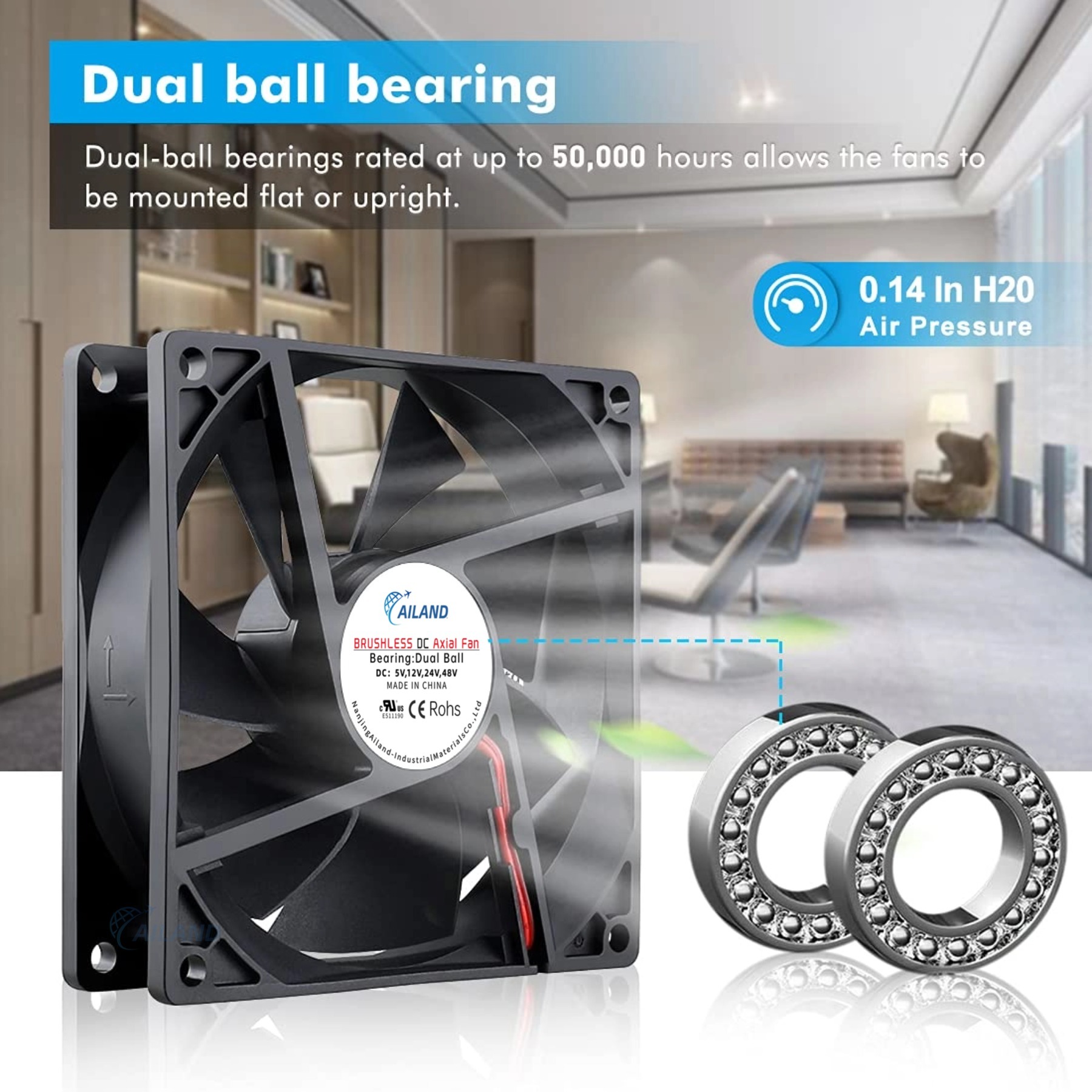Detailed explanation of photovoltaic inverter fan selection
Release time:
2024-10-25
Under the global carbon neutrality goal, clean energy will gradually replace fossil energy, and photovoltaic power generation has become one of the main forces of new energy. Photovoltaic power generation can not only provide daily electricity for life and production, but also store excess electricity through energy storage systems. Whether it is power generation or energy storage, the essence is energy conversion, which will generate a large amount of heat. If the heat is not dissipated in time, it will affect the service life of photovoltaic energy storage equipment. DC cooling fans, as key auxiliary equipment, play a huge role.
In the photovoltaic inverter cooling system, the selection of ventilation fans directly affects the working efficiency and service life of the equipment. The following are key selection points to help you choose the most suitable fan for inverter cooling: 
1. Size and Installation Method
-
Standard Size Common sizes include 80×80mm, 92×92mm, 120×120mm, 140×140mm, etc., which need to be selected according to the internal space of the inverter
-
Thickness Selection Standard thickness 25-38mm, ultra-thin type (15-20mm) is suitable for compact design
-
Installation Method Screw fixing is preferred to ensure stable installation in a vibration environment
2. Electrical Specifications
-
Operating Voltage Usually choose 12V/24V/48V DC, which needs to match the inverter power system
-
Current Requirement Rated current 0.1-0.5A, power consumption is controlled within the range of 2-10W
-
Speed Range 1500-5000RPM is recommended, and PWM speed regulation is better
3. High Temperature and Humidity Resistance
-
Operating Temperature Must meet the operating range of -20℃ to +70℃, some models can reach 85℃
-
Protection Level At least IP55 standard, dustproof and waterproof
-
Moisture Resistance Can work for a long time in a 95%RH humidity environment
-
Material Selection The shell uses flame-retardant PP or PBT material, and the fan blades use weather-resistant PPS
4. Performance Parameters
-
Airflow Requirement 20-80CFM is recommended, select according to the inverter power
-
Static Pressure Capability 0.5-3.0mmH₂O, ensure that the system wind resistance is overcome
-
Noise Control ≤45dB(A) when running at full speed
5. Reliability Requirements
-
Bearing Type Double ball bearings are preferred, with a lifespan ≥70,000 hours
-
MTBF Mean time between failures ≥100,000 hours
-
Corrosion Resistance Pass the salt spray test (more than 96 hours)
6. Intelligent Control Function
-
Temperature Control Function Supports temperature sensing automatic speed regulation
-
Fault Alarm Optional speed detection signal output
-
Energy-Saving Mode Supports PWM speed regulation to reduce energy consumption
Selection Suggestions :
-
Small inverter: 80×80mm axial flow fan, 24V DC, IP55
-
Medium-sized inverter: 120×120mm centrifugal fan, 48V DC, IP56
-
Large inverter: 140×140mm double ball bearing fan, with PWM speed regulation
Keyword Optimization :
"Photovoltaic inverter cooling fan", "IP55 protection fan", "High temperature and humidity resistant fan", "PWM speed regulation fan", "Long-life ball bearing fan"
Choosing the right fan can significantly improve the inverter's heat dissipation efficiency. It is recommended to prioritize products with TUV/UL certification to ensure system reliability.



